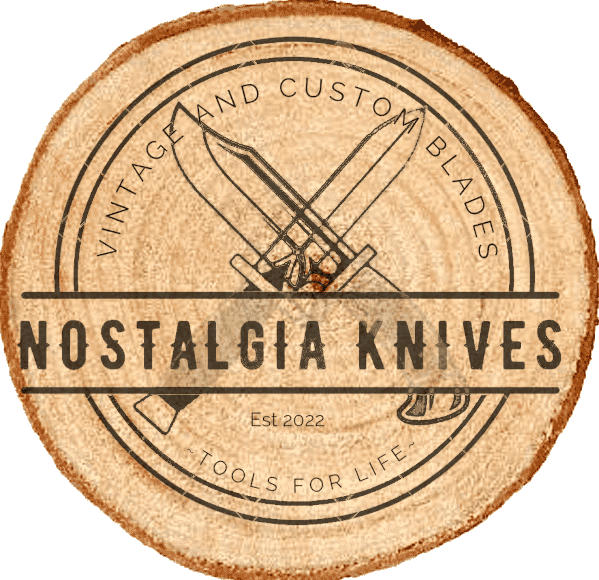Modern Marvels: Technological Advances in Knife Design and Production.
Posted on November 19, 2023 by congo
Modern Marvels: Technological Advances in Knife Design and Production.
Introduction:
In the ever-evolving world of cutlery, technological advancements have become the driving force behind the design and production of modern knives. From innovative materials to cutting-edge manufacturing processes, this article explores the technological marvels that have reshaped the landscape of knife design, transforming these essential tools into precision instruments that meet the demands of the 21st century.
Chapter 1: Materials of the Future
High-Performance Steels:
One of the most significant technological leaps in knife-making has been the development of high-performance steels. Traditional carbon and stainless steels have been surpassed by alloys with enhanced properties, such as improved edge retention, corrosion resistance, and toughness. Steels like CPM-S30V, CPM-20CV, and Damascus variants have become staples, allowing knife designers to create blades that excel in diverse cutting applications.
Powder Metallurgy:
Powder metallurgy has revolutionized the production of steel for knives. This advanced manufacturing process involves blending fine powdered metals, such as steel alloys and vanadium, before sintering them at high temperatures. The result is a more uniform distribution of alloying elements, contributing to superior performance characteristics. Powder metallurgy steels have become synonymous with high-end, precision knives.
Chapter 2: Precision Manufacturing Techniques
CNC Machining:
Computer Numerical Control (CNC) machining has brought a level of precision to knife manufacturing that was once unimaginable. This technology allows for the creation of intricate blade shapes, handles, and components with micrometer-level accuracy. CNC machines, guided by digital designs, ensure consistency in production, contributing to the reproducibility of high-quality knives on a large scale.
Waterjet and Laser Cutting:
Waterjet and laser cutting technologies have become instrumental in shaping the profiles of knife blades. Waterjet cutting uses a high-pressure stream of water mixed with abrasive particles to precisely cut through various materials. Laser cutting, on the other hand, employs focused laser beams for accurate and intricate cuts. These technologies enable the creation of complex blade geometries and intricate patterns in a wide range of materials.
Wire EDM (Electrical Discharge Machining):
Wire EDM is a precision machining technique that utilizes electrical discharges to shape and cut materials with exceptional accuracy. In knife manufacturing, it is often employed for creating intricate parts, such as liners and locking mechanisms. Wire EDM allows for the production of components that demand tight tolerances, contributing to the reliability and functionality of modern knives.
Chapter 3: Innovation in Locking Mechanisms
Frame Locks and Liner Locks:
Advancements in locking mechanisms have greatly enhanced the safety and usability of folding knives. Frame locks and liner locks, featuring a part of the handle that moves behind the blade to lock it in place, provide robust and secure locking mechanisms. These innovations, often produced using CNC machining, have become staples in the design of modern folding knives.
Ball Bearing Pivots:
Ball bearing pivots have revolutionized the deployment and smoothness of opening mechanisms in folding knives. These tiny, high-precision bearings facilitate friction-less movement, allowing for swift and reliable blade deployment with minimal effort. The incorporation of ball bearing pivots has become synonymous with the “flipper” opening mechanism, a hallmark of modern folding knife design.
Axis and Compression Locks:
Innovative locking mechanisms like the Axis Lock and Compression Lock have become popular choices among knife designers. The Axis Lock, developed by Benchmade, features an ambidextrous mechanism that secures the blade in place from both sides. The Compression Lock, designed by Spyderco, enhances safety and ease of use, further showcasing the ingenuity of modern locking systems.
Chapter 4: Ergonomics and Design Integration
3D Printing:
The advent of 3D printing has opened new frontiers in the design and prototyping of knife components. Designers can create intricate and ergonomic handle shapes, experiment with textures, and fine-tune the overall aesthetics of the knife. 3D printing allows for rapid iteration and customization, enabling designers to push the boundaries of traditional knife handle design.
Carbon Fiber and Titanium Integration:
Modern knives often feature handle scales made from advanced materials like carbon fiber and titanium. Carbon fiber, known for its strength-to-weight ratio, provides durability without adding significant weight. Titanium, prized for its corrosion resistance and high strength, is commonly used for liners and frame locks. The integration of these materials exemplifies the fusion of technology, functionality, and aesthetics in contemporary knife design.
Smart Materials and Multifunctional Blades:
The exploration of smart materials, such as shape memory alloys and self-healing polymers, opens possibilities for multi-functional blades. Imagine a blade that can adapt its shape or repair minor damage over time. While these concepts are still in the realm of speculation, ongoing research and development suggest that the future of knife materials may hold surprises yet unseen.
Conclusion:
The modern marvels of knife design and production showcase an exciting convergence of traditional craftsmanship and cutting-edge technology. From the molecular composition of advanced steels to the precision of CNC machining and the ergonomic innovations in handle design, each element contributes to the creation of knives that are not just tools but technological artifacts. As we stand on the precipice of a new era in cutlery, the fusion of tradition and technology continues to shape the evolution of knives, ensuring that they remain indispensable companions in the hands of users who demand excellence in both form and function.
Category: Blade Talk, History & Legacy
Free Shipping on orders over $79.00
- - USA only
- - USPS Flat Rate
- - Not valid with other promotions
Make An Offer!
- - Button only visible to logged in users.
- - Unreasonable offers will be dismissed.
- - Submitting an offer is not a commitment to purchase.
- - Some items excluded from Make Offer feature.
Category Menu
- Under $109292 products
- Camp/Scout Knives3737 products
- Chef Knives33 products
- Collectible Knives335335 products
- True Nostalgia2525 products
- Damascus Knives3434 products
- Everyday Carry[EDC]427427 products
- Fixed-Blade5454 products
- Folding-Blade343343 products
- Straight-Razor11 product
- Pocket Knives397397 products
- Hunting Knives7878 products
- Money Clip Knives22 products
- Multi-Tool Knives4848 products
- Novelty Knives3737 products
- The Barrel33 products
- By Manufacturer390390 products
- Amica11 product
- Anvil Brand66 products
- AutoPoint22 products
- Bear MGC11 product
- Bear & Son Cutlery11 product
- Böker1212 products
- Böker Solingen66 products
- Boker USA33 products
- Boker Plus22 products
- Browning Knives22 products
- Buck knives22 products
- Buck Creek11 product
- CamCo33 products
- Camillus Cutlery3232 products
- Case XX™2626 products
- Cattaraugus Cutlery Co.33 products
- Cherokee11 product
- Clauss Cutlery11 product
- Colonial Knives1818 products
- Coyote Prov. USA11 product
- Ranger11 product
- Columbia River11 product
- Comanche11 product
- Craftsman55 products
- Crowing Rooster11 product
- Cuda11 product
- Custom/Handmade3232 products
- CutCo11 product
- E.C. Simmons Cutlery Co.11 product
- Elk Ridge11 product
- ESEE11 product
- F.A. Bower Imp. Co.11 product
- Federal Knife Co.33 products
- Johnston USA11 product
- Frost Cutlery1515 products
- White Tail11 product
- Steel Warrior55 products
- Frost Family11 product
- G.C. & CO Mora, Sweden11 product
- Gerber44 products
- Gerson Co. Boston11 product
- Hammer Brand55 products
- Hen & Rooster™1010 products
- HIT USA11 product
- Imperial3333 products
- iPak11 product
- IXL George Wostenholm11 product
- J.B Rand & Co.11 product
- John Primble11 product
- Johnson Western Works11 product
- Ka-Bar22 products
- Keen Kutter11 product
- Kent22 products
- Kentucky Cutlery44 products
- Eagle Edge44 products
- Kissing Crane11 product
- Klein Tools Inc.44 products
- Lark33 products
- Latama11 product
- New York Knife Co.11 product
- Old Forge Knives11 product
- Other Knives22 products
- Owl Head22 products
- PAL Cutlery Co.11 product
- Parker Cutlery Co.11 product
- PIC11 product
- Providence Cutlery66 products
- Puma33 products
- Queen Cutlery Co.11 product
- Remington22 products
- Ridge Runner11 product
- RILL Simple Tools11 product
- Rite Edge11 product
- Robeson Cutlery33 products
- Rough Rider33 products
- Royal Brand Cutlery11 product
- Sabre22 products
- Schrade2424 products
- Old Timer1212 products
- Uncle Henry66 products
- Sears55 products
- Seki22 products
- Sharp33 products
- Sheffield Knives55 products
- Simonds11 product
- SOG22 products
- Solingen Knives11 product
- Syracuse USA11 product
- Clover Brand11 product
- The Ideal1717 products
- Thornton USA11 product
- Ulster77 products
- Unknown/Misc.4343 products
- Utica Cutlery Company99 products
- Kutmaster99 products
- Valley Forge - Newark, NJ11 product
- Victorinox1010 products
- Wenger33 products
- Western22 products
- Winchester11 product
- Zippo55 products
EXCELLENT rating
Based on 1 reviews

By using this site you're accepting
our Online Sales Disclaimer
*Must Be 18 years or older to purchase*
Buyers Are Responsible For Knowledge Of And Adherence To Their Country, State and Local Knife Laws.
CA PROP 65 ⚠WARNING: Cancer and Reproductive Harm - www.P65Warnings.ca.gov
Copyright © 2025 · All Rights Reserved · NostalgiaKnives.com
Theme: Natural Lite by Organic Themes
